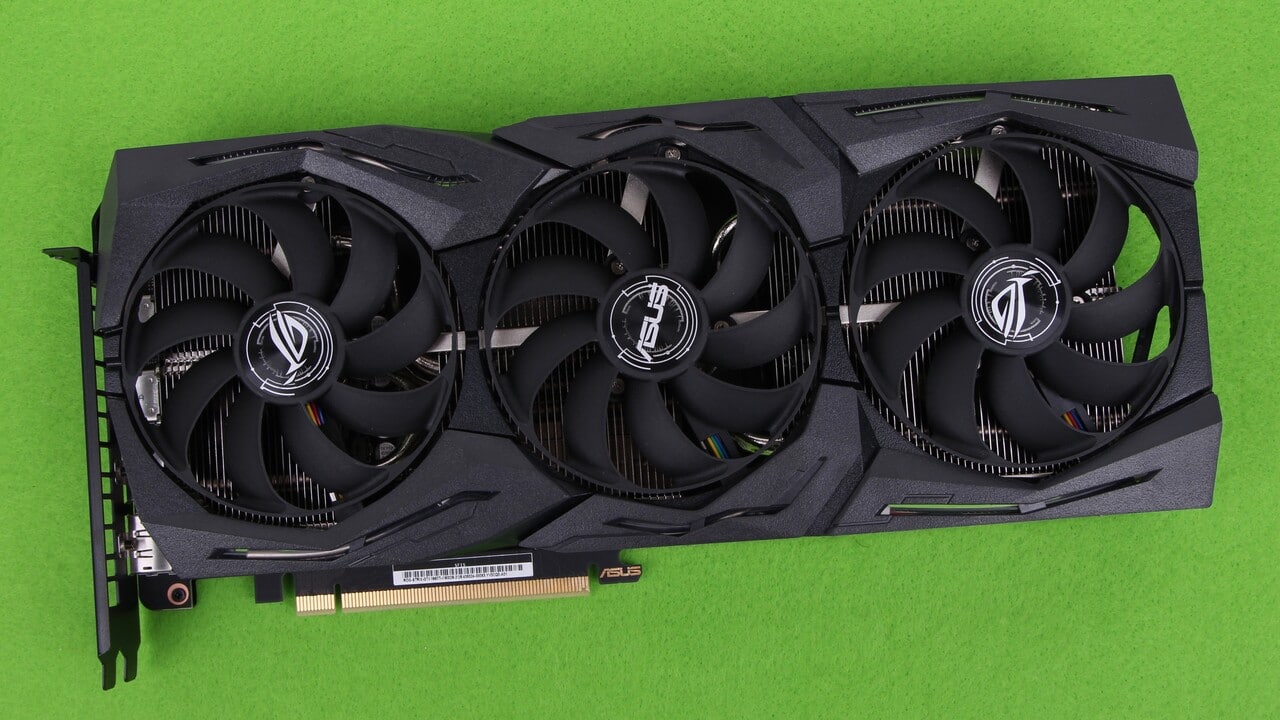– The GeForce GTX 1660 Ti is based on Nvidia's Turing technology, but does not require ray tracing and AI cores. So it stands between Turing and Pascal, the name should make it clear. In terms of performance in games, there is a GeForce GTX 1070 FE level, competition from the price of 300 euros, but also from AMD.
The Nvidia GeForce GTX 1660 Ti with Turing
Not the GeForce GTX 2050, not the GeForce GTX 1160 but the GeForce GTX 1660 Ti is the fourth graphics card class with a Turing GPU for gamers. For Nvidia, GeForce GTX 1660 Ti was the best name for a graphics card based on Turing, which does not offer the essential new functions, but thanks to the modern GPU has nothing to do with Pascal. GeForce GTX 2050 with GTX instead of RTX was therefore not enough for Nvidia to differentiate it from GeForce RTX 2000, GeForce GTX 1160 was too close to Pascal. In 1660 it should now be corrected: GTX instead of RTX emphasizes the missing functions, 1660 with less distance to 2060 than to 1060 the significantly increased performance.
But what is the GeForce GTX 1660 Ti anyway? Roughly speaking, it offers the same Turing technology as the GeForce RTX 2000 test subjects, but without ray tracing and without tensor cores. Apart from that, the architecture is identical. However, Nvidia has further reduced the number of shader units compared to the GeForce RTX 2060, but has left the memory expansion at 6 GB GDDR6.
Models from PNY and Asus tested
The GeForce GTX 1660 Ti is said to work noticeably faster than the Radeon RX 590 and roughly as fast as the GeForce GTX 1070. According to Nvidia, partners will initially want at least 299 euros for custom designs.
BitcoinMinersHashrate will find out on the following pages whether the calculation works with a simple PNY GeForce GTX 1660 Ti XLR8 Gaming and a higher quality but also more expensive Asus GeForce GTX 1660 Ti Strix OC.
TU116 – Turing without RT & AI cores
The GeForce GTX 1660 Ti comes with a new and therefore the fourth Turing GPU: the TU116. Like the larger versions, the TU116 is manufactured in the 12 nm process at TSMC, but is smaller with 284 mm² and less complex with 6.6 billion transistors – the much larger TU106 on GeForce RTX 2060 and RTX 2070 still comes in at 445 mm² and 10.8 billion circuits.
Three graphics processing clusters have remained in the TU116 and each comes with 8 streaming multiprocessors as with TU104. The number of shader units is thus reduced from 2,304 to 1,536 FP32 ALUs compared to TU106. as is usual with Turing, there are just as many INT32 ALUs that can also perform integer calculations at the same time as floating point. In terms of cache organization per SM, polymorph engines and other properties such as variable rate shading, there are no differences from the other Turing offshoots. The number of units is scaled down, but remains the same as for the large GPUs.
It is also interesting to compare the performance of the TU116 GPU on the GeForce GTX 1660 Ti with that of the GP104 GPU on the GeForce GTX 1080. Because the GP104 is 11 percent larger, but it is also 23 percent faster in the configuration of the two graphics cards. This indicates that a Turing shader is faster than a Pascal shader, but Turing per mm² chip area is also slower than Pascal in current games.
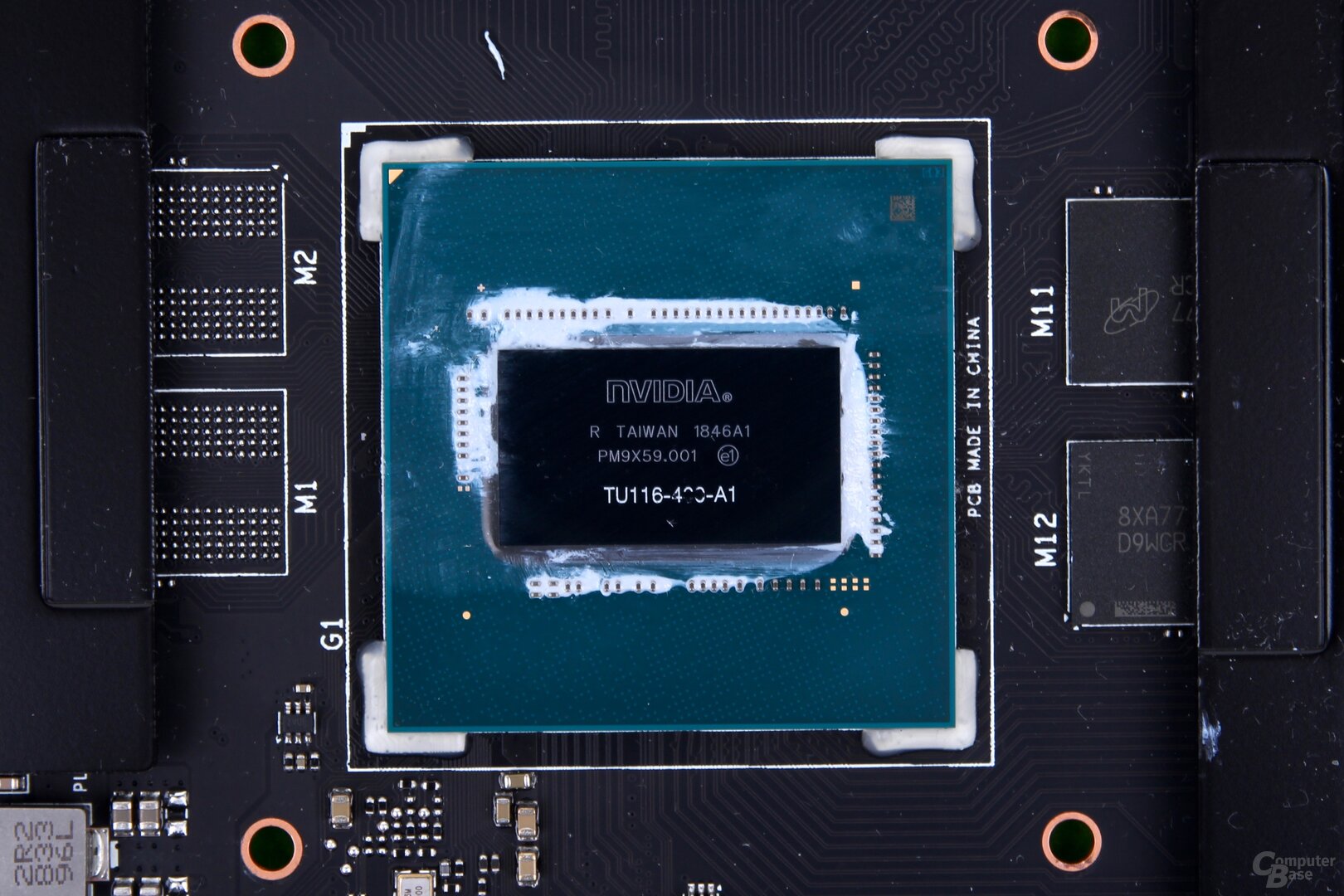
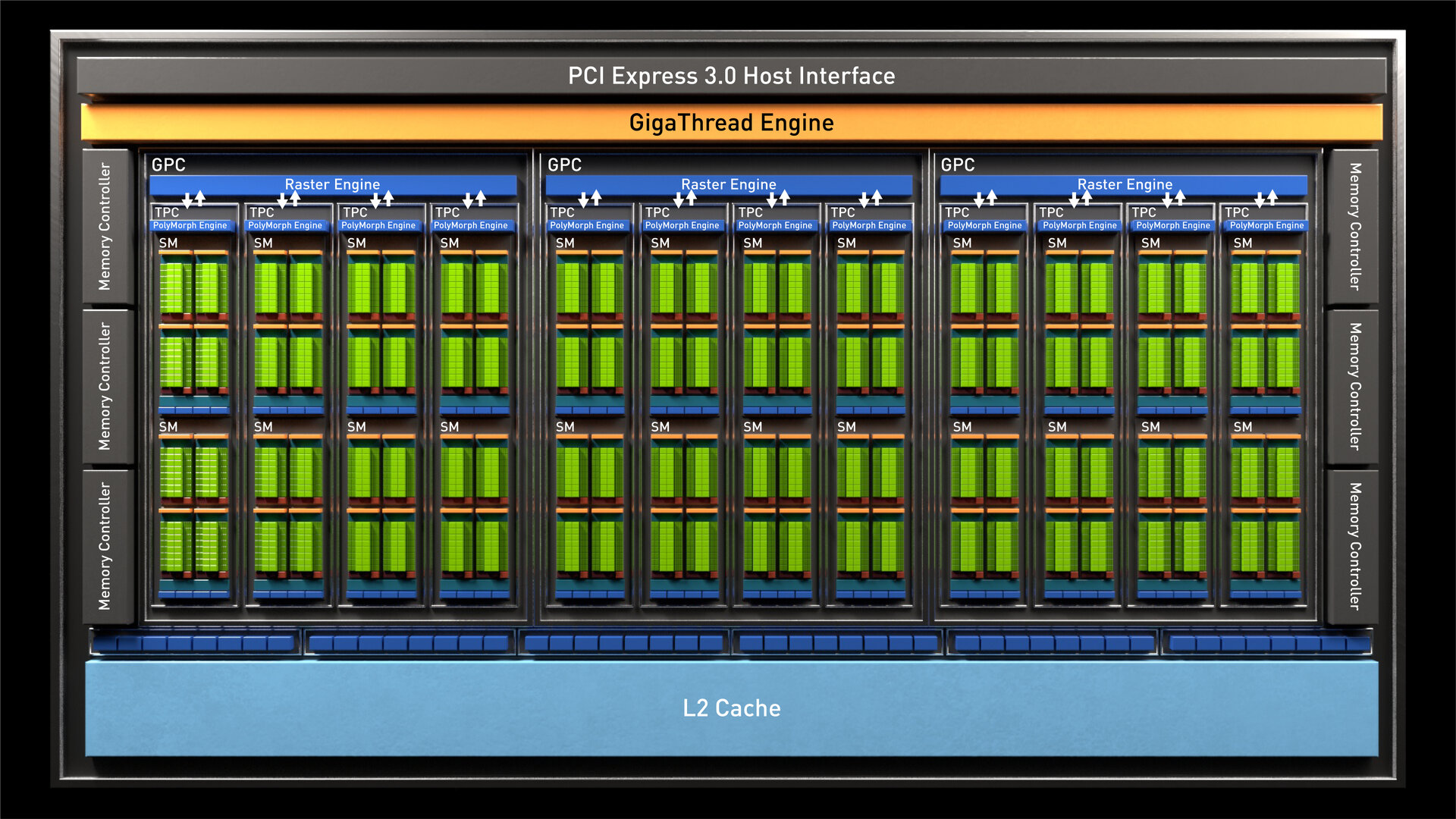
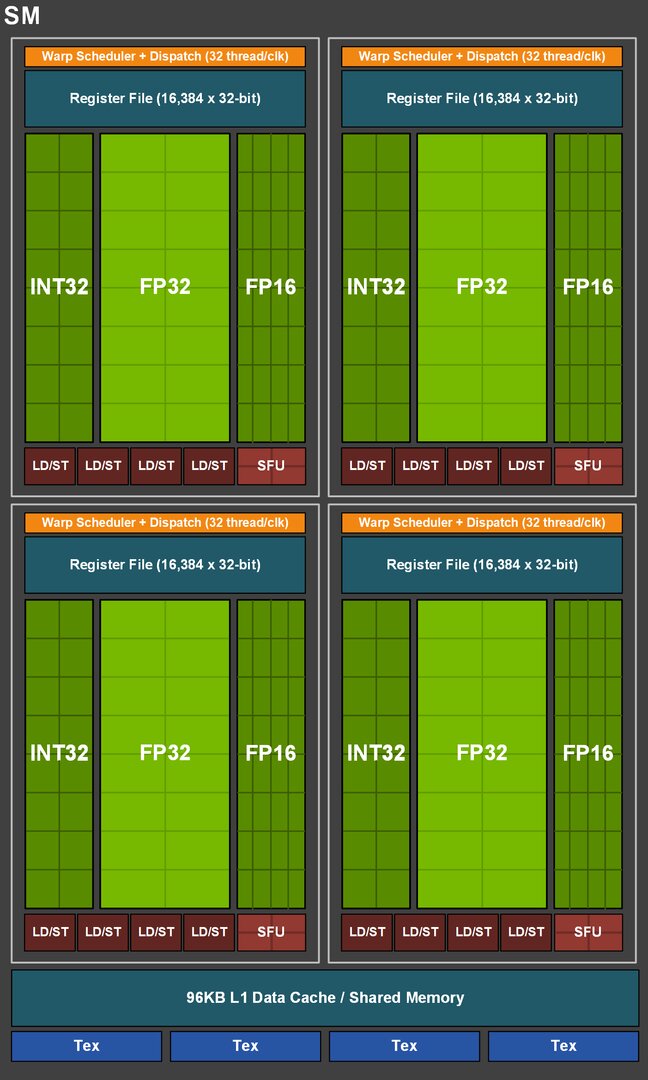
A streaming multiprocessor on the TU116 differs from the other Turing GPUs in only two ways: There are neither ray tracing nor tensor cores for AI calculations on the TU116. That's why there is no longer an RTX in the name of the GeForce GTX 1660 Ti, but again the well-known abbreviation "GTX". However, this automatically reduces the space required per SM, so that the TU116 turns out smaller than if there were a hypothetical TU116 with just as many SM including RT and tensor cores, whereby the difference is surprisingly small. Nevertheless, saved space enables more of this on a wafer and reduces production costs.
Officially, the reason for not using the special cores, however, is that a certain basic service is required to be able to use the features effectively. This is certainly correct for ray tracing, but the argument does not work for the tensor cores and thus DLSS.
6 GB GDDR6 with less clock on the 192-bit interface
Nvidia has also applied the red pencil to the memory interface. Of the 256 bits of the TU106, the TU116 still has 192 bits and thus six 32-bit controllers. This automatically means that the memory expansion is limited to 6,144 MB (or half). However, the new and fast GDDR6 memory remains, with the frequency of the GeForce GTX 1660 Ti falling from 7,000 MHz to 6,000 MHz – 7,000 MHz was previously standard at Turing.
Speaking of frequency: Nvidia specifies a base clock of 1,550 MHz for the graphics card. The average turbo is said to be 1,770 MHz. Nvidia allows the GeForce GTX 1660 Ti a maximum of 120 watts – as much as the GeForce GTX 1060.
A reference to the question of how big Turing is
If you compare the properties of the Pascal and Turing GPUs, you can see some interesting details. For example, that Turing requires significantly more chip area than Pascal per shader – despite smaller production. The GP104 is only 11 percent larger, but offers 67 percent more FP32 ALUs. Since neither ray tracing nor tensor cores play a role in the TU116, the classic chip must be responsible for this. If you also consider that the TU116 also has a smaller memory interface than the GP104, you can see that the additional Turing properties such as separate integer units and other new features such as variable rate shading cost massive chip area.
Comparing the TU116 and the TU106 shows that ray tracing and tensor cores cost space, but the proportion is not large: with 50 percent more shader units and the larger memory interface, the TU106 is only 64 percent larger than the TU116. This means that RT and tensor cores cannot occupy too much chip area, especially since the packing density is only slightly in favor of the TU106.
GeForce GTX 1660 Ti from Asus (Strix) and PNY (XLR8) in detail
The GeForce GTX 1660 Ti is not available as a Founders Edition, only custom designs will be available in stores. BitcoinMinersHashrate compares two extremely opposite specimens in this test.
The PNY GeForce GTX 1660 Ti XLR8 OC is aimed at purists. The small and simple cooling system, no RGB and the relatively low clock rate are available at the lowest entry price of 299 euros. The complete opposite is the Asus GeForce GTX 1660 Ti Strix OC: A high clock rate, an elaborate cooling system, RGB and numerous other features cost an additional 50 euros. The class difference is also clear in terms of weight: the PNY graphics card only weighs 414 grams, the Asus counterpart a whopping 1,190 grams.

The PNY GTX 1660 Ti XLR8 is aimed at purists
The PNY GeForce GTX 1660 Ti XLR8 OC is only 17 cm long, the PCB only 15 cm. Only in terms of width is PNY more generous at 12.5 cm. The cooling system is also kept simple: there is an aluminum cooler, three heat pipes and an axial fan with a diameter of 95 mm.
It does not stop at low temperatures, at least 1,000 revolutions per minute are always present. The average turbo clock is 1,815 MHz, so the TU116 GPU is overclocked by 45 MHz. An eight-pin power connector is required; the GeForce GTX 1660 Ti XLR8 OC can pull a maximum of 120 watts – this in turn corresponds to Nvidia's reference specifications. The memory operates at the normal 6,000 MHz. Monitors can be connected to a DisplayPort 1.4, an HDMI 2.0b and a dual-link DVI output.
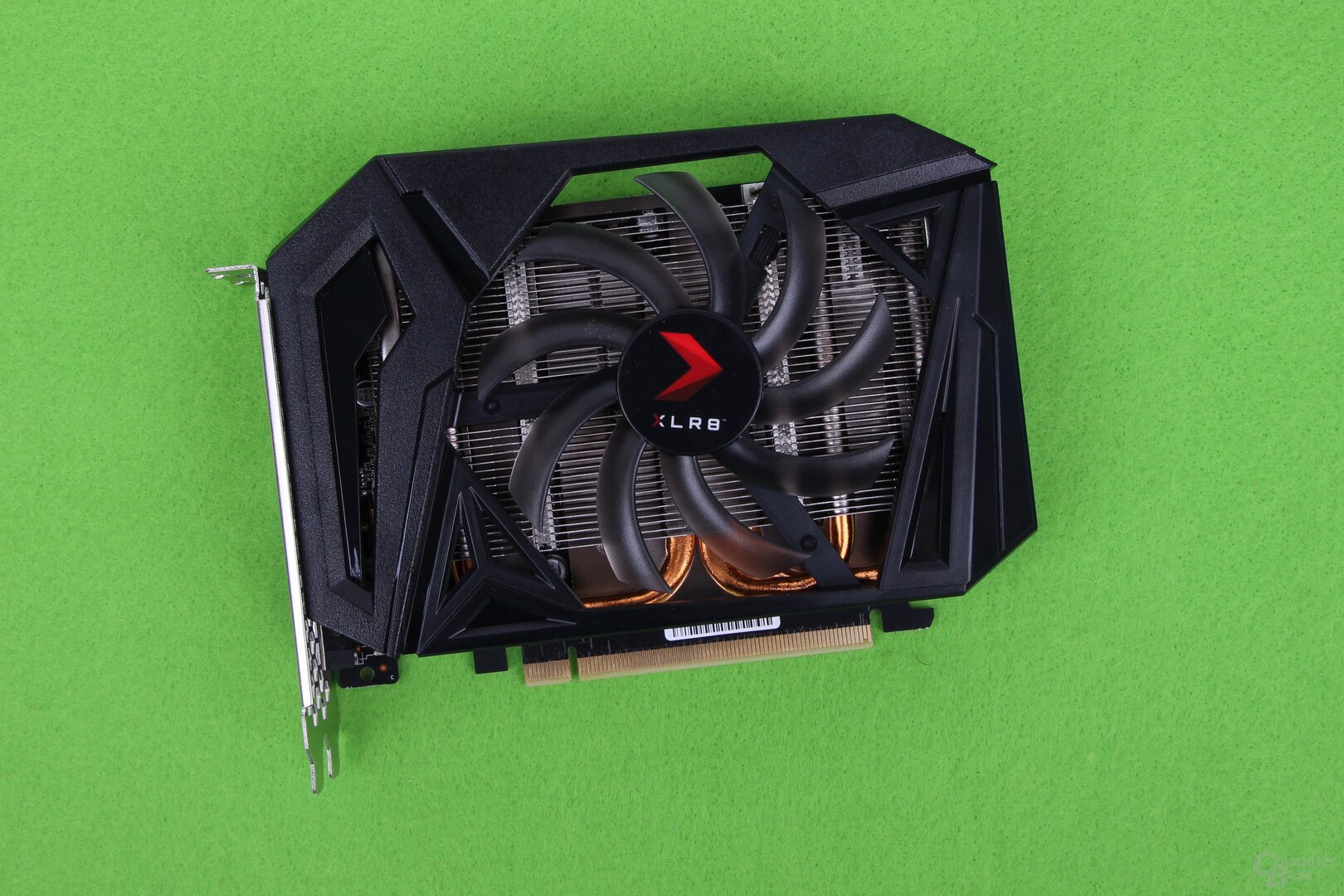

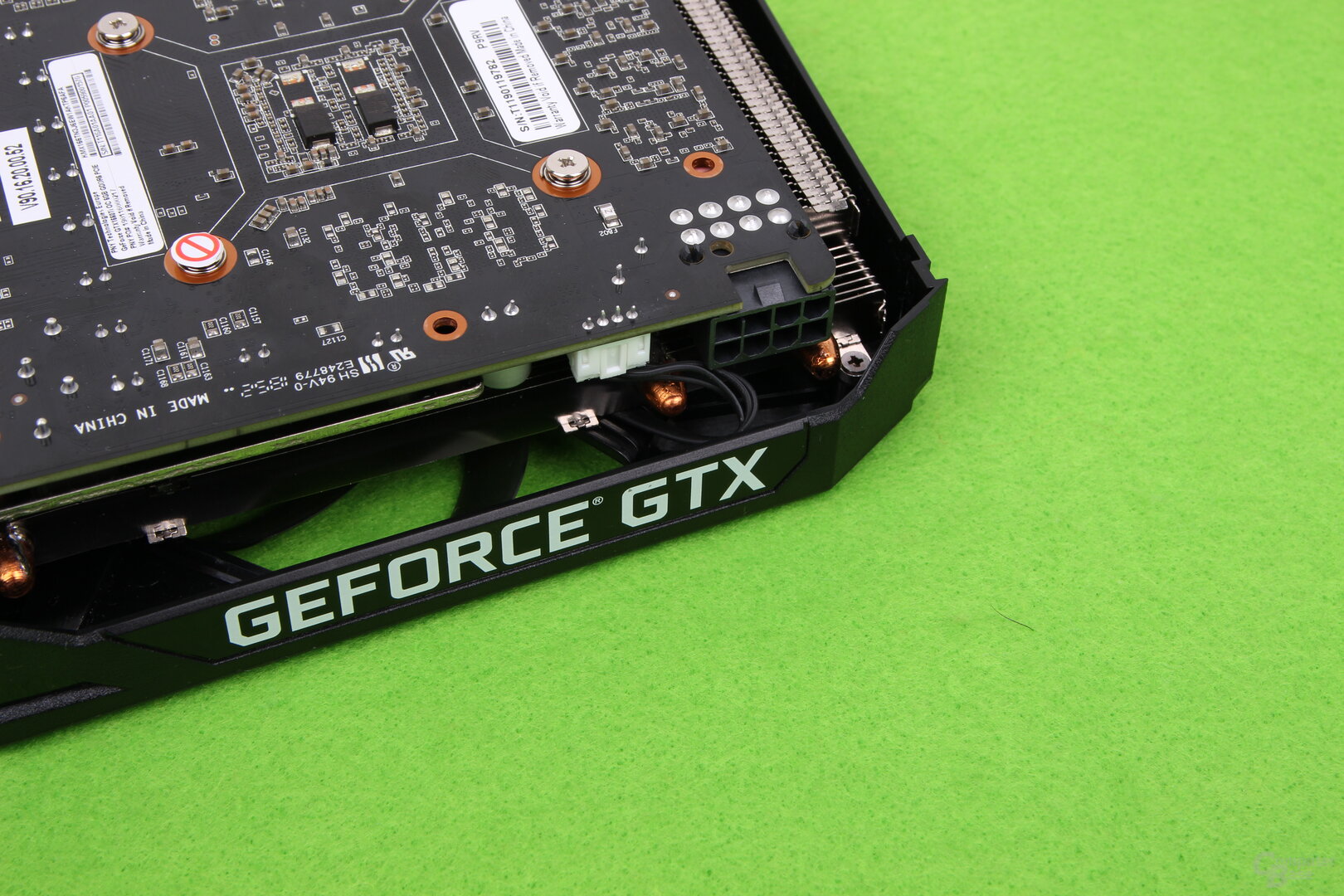
The Asus GeForce GTX 1660 Ti Strix OC does not differ in terms of features from the GeForce RTX 2080 Ti Strix OC, all features are included. The PCB is aimed at overclockers and, at 29 cm, is almost twice as long as that of PNY. The graphics card itself is 30 cm long due to the cooler.
The cooler is the well-known Strix dual-slot cooler in the 2.1-slot version, although Asus uses less material than, for example, the GeForce RTX 2060 Strix. The radiators are less bulky and the number of heat pipes shrinks to three. Three axial fans with a diameter of 85 mm provide fresh air. This is the fan type newly introduced by Asus with the GeForce RTX series, which should generate more air pressure at the same speed. The fans stop at low temperatures and therefore on the desktop. Starting at a GPU temperature of 56 degrees Celsius, they start up at around 850 revolutions per minute.
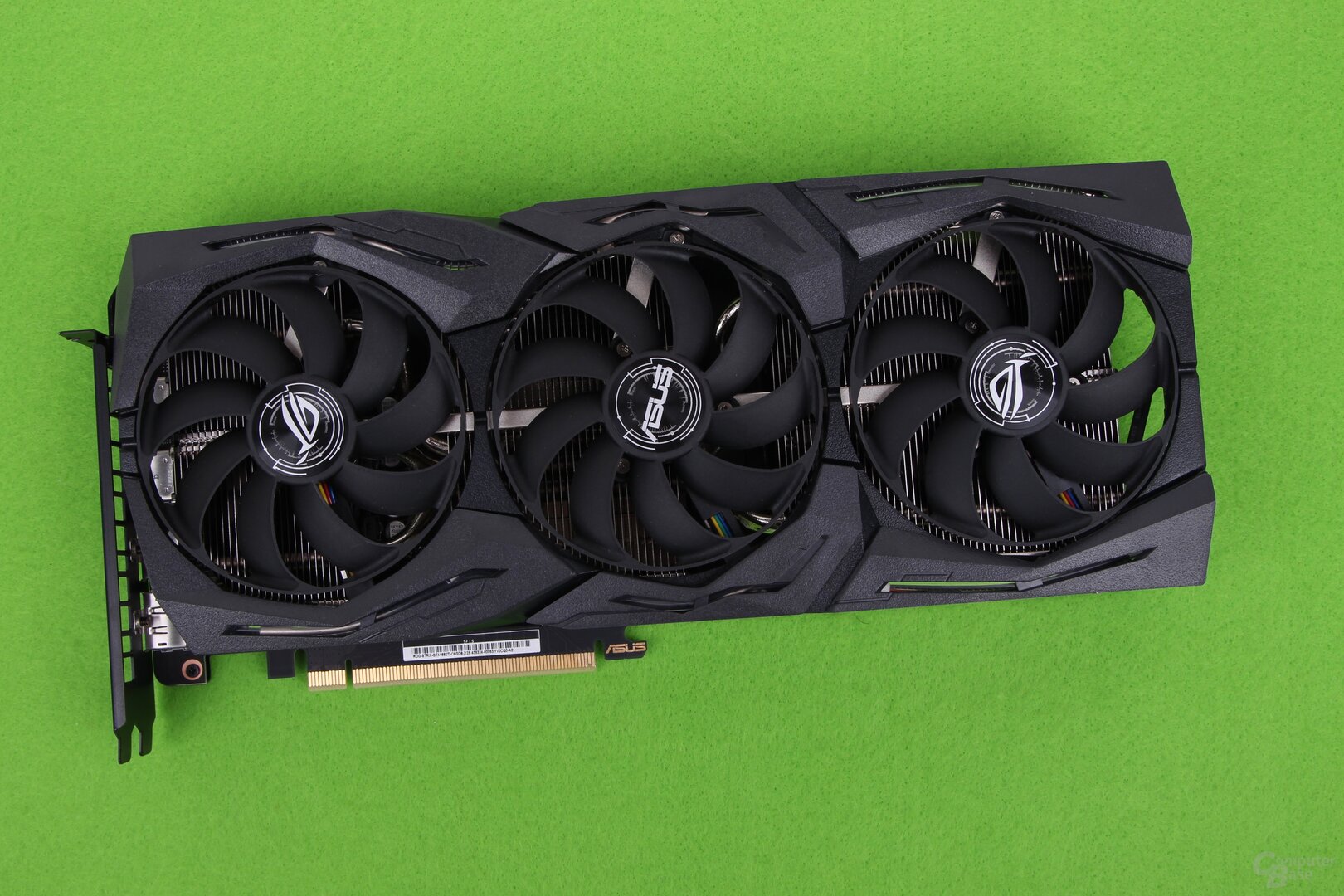
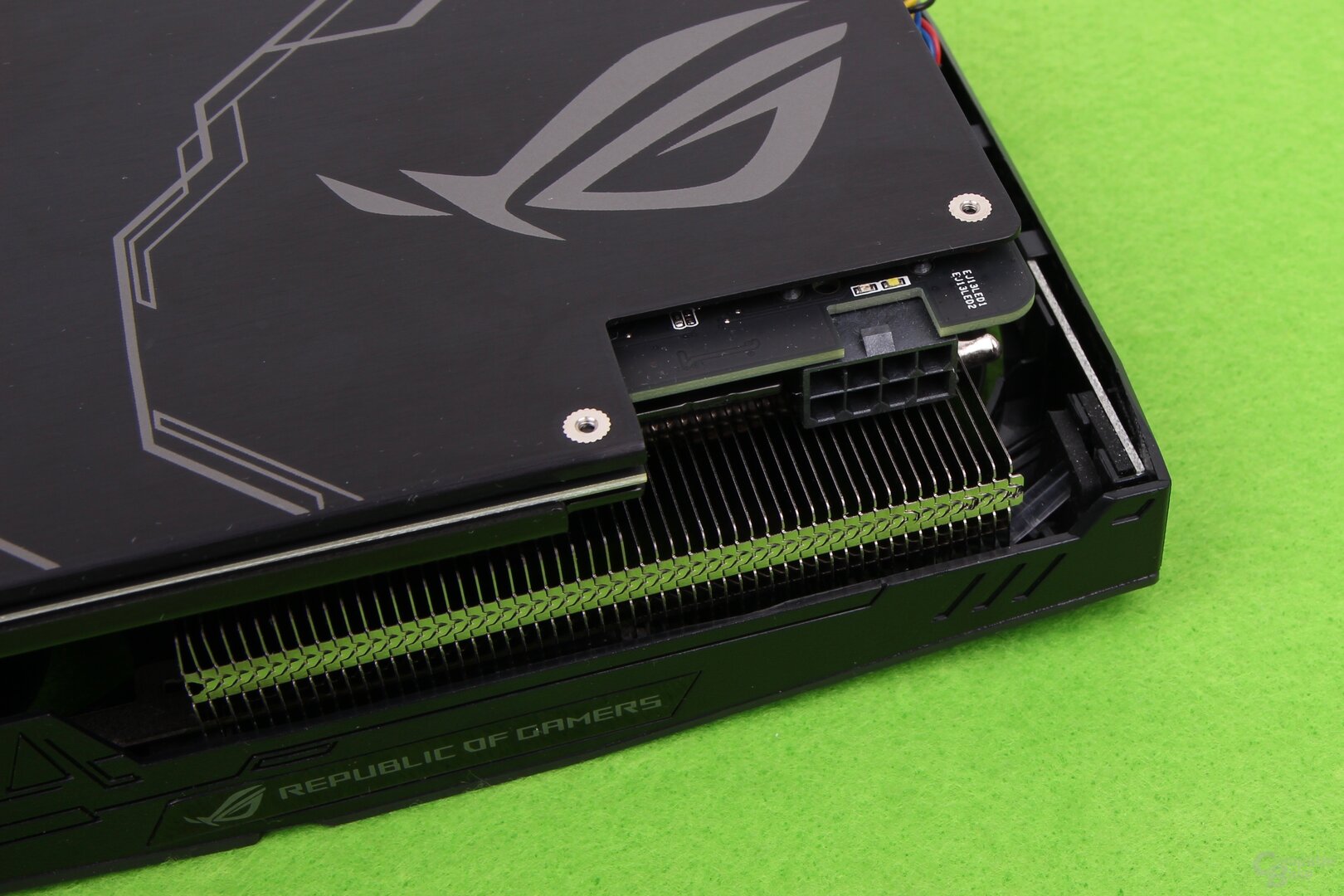
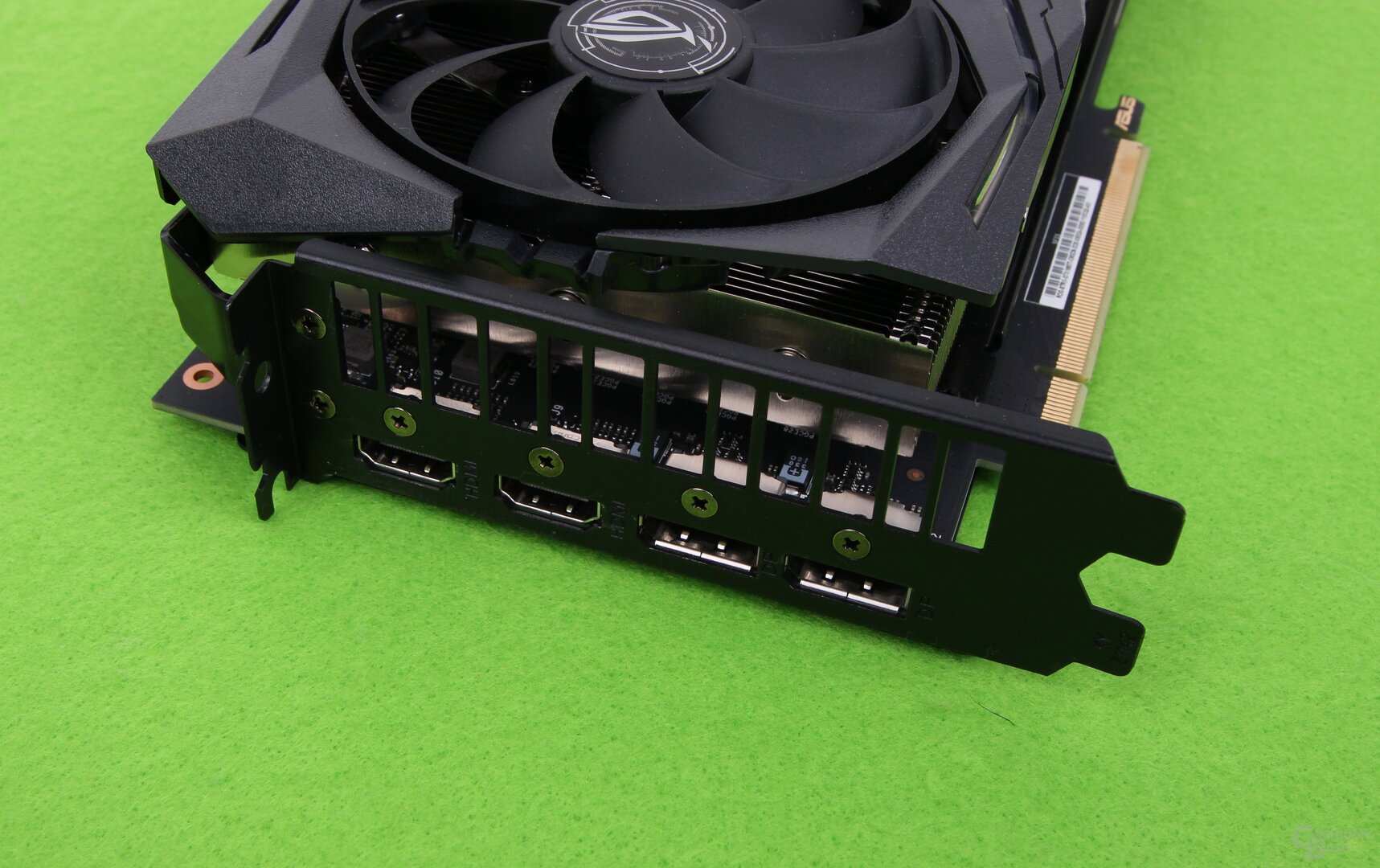
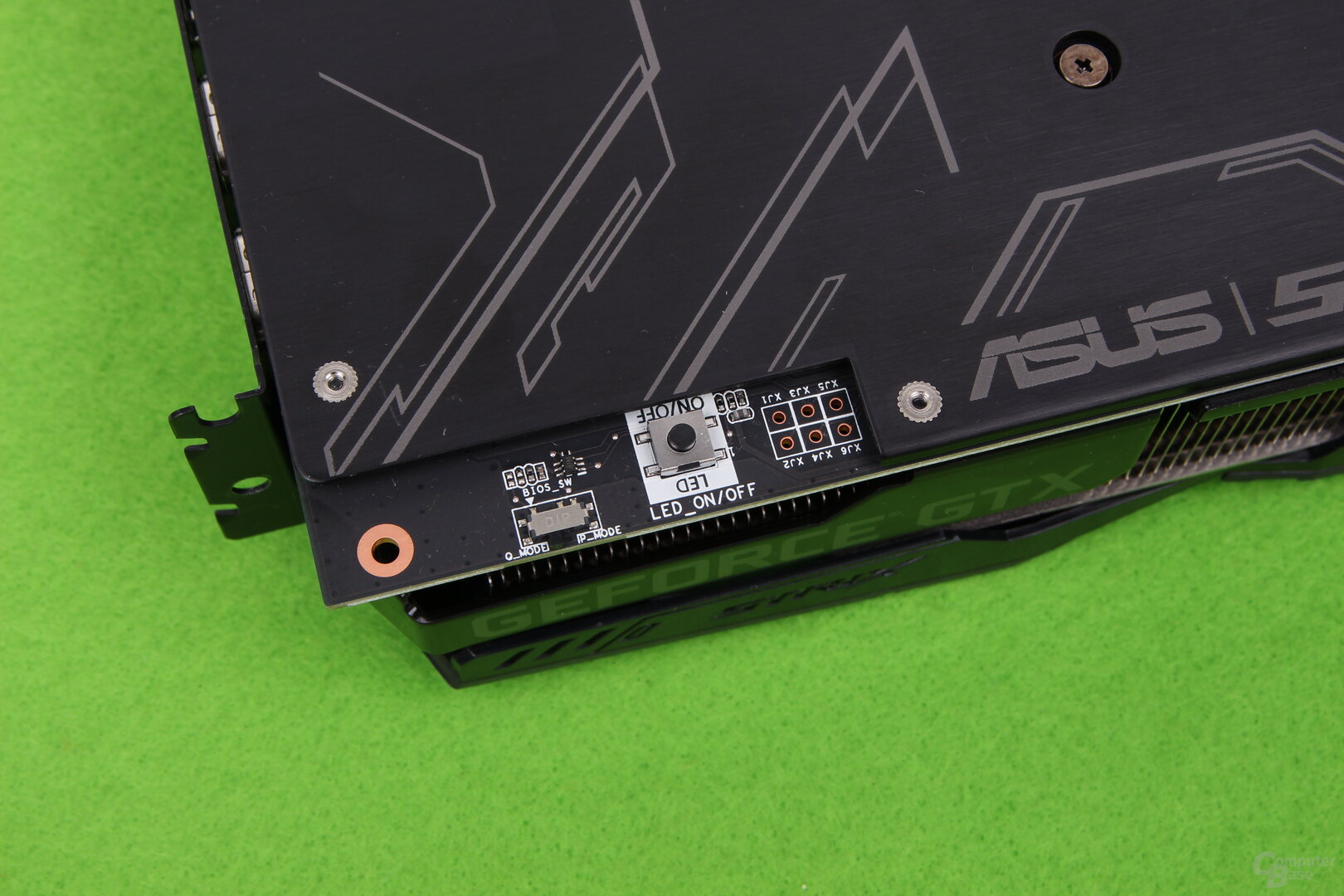
The graphics card has a second, called Performance BIOS, which turns the fans faster and offers lower temperatures. On the Asus GeForce GTX 1660 Ti Strix OC, however, the performance BIOS is completely pointless, only the Quiet BIOS that is active at the factory should be used.
Asus offers a good deal more tact
Asus clearly overclocked the GeForce GTX 1660 Ti. The average turbo is specified at 1,860 MHz, 90 MHz more than the standard. In conjunction with the maximum power consumption increased to 130 watts, the clock is significantly higher in practice than with PNY. If that's not enough, you can activate "OC Mode" using Asus' own GPU Tweak II software. This increases the GPU clock by a further 30 MHz to 1,890 MHz and the power target to 110 percent. The 6,144 MB GDDR6 memory, on the other hand, is always driven at 6,000 MHz. An eight-pin power connector must also be connected to the graphics card in this case.
In addition, the Asus GeForce GTX 1660 Ti Strix OC offers complex RGB lighting. This can also be switched off using a tool or directly at the push of a button on the PCB. The graphics card can also control two PWM fans connected at the end using the Asus tool. Monitors can be controlled via two DisplayPort or two HDMI connections.
On the next page: test system and test results




